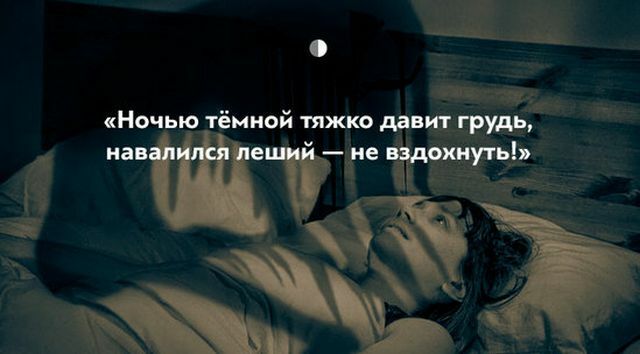 Seizures( from English convulsions) is a sudden contraction of the muscles that occurs involuntarily and has a paroxysmal character. They cause severe, but short-term pain, which can recur after a while.
Seizures( from English convulsions) is a sudden contraction of the muscles that occurs involuntarily and has a paroxysmal character. They cause severe, but short-term pain, which can recur after a while.
Seizures are localized in different parts of the body, observed in all ages and at any time of the day. Most often short-term contractions of muscle fibers occur in the evening or at night, the elderly and children's age increase the likelihood of their occurrence.
Contents of
- Theories of convulsions and tremors in sleep
- Types of spasms and twitches
- Hypnogic convulsions
- Myoclonic twitching
- Restless legs syndrome
- Sleep paralysis
- How do they manifest themselves and where are they localized?
- Causes and features of adult nocturnal cramps
- Baby cramps
- What to do, how to get rid of the problem?
- Unpleasantness emu we. .. is unacceptable
Theories of convulsions and shivering in sleep
The phenomenon of seizures and shudders when falling asleep have been studied for a very long time, but an unambiguous explanation of why a person twitches when it falls asleep, and then even in a dream, there is still no.
Uncontrolled flinch and uncontrolled muscle contractions during falling asleep and in a dream are explained by several theories:
- When a person falls asleep, the body relaxes, organs and systems slow down their activity, the heart rate decreases and the breathing slows down. The brain perceives such symptoms as the danger of and takes measures to "get" the normal work of the organism, sending impulses to the motor structures. A nervous impulse causes a contraction of muscle or muscle group, as a result of which a person jumps in a dream or feels a spasm. Brain signals like the
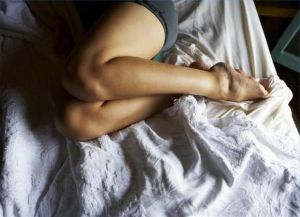 usually draw a picture of a falling person or a collision with something to a sleeping person in order to artificially create a stressful situation with the release of adrenaline.
usually draw a picture of a falling person or a collision with something to a sleeping person in order to artificially create a stressful situation with the release of adrenaline. - Another theory treats characteristic twitchings and convulsions as the process of transition from one phase of sleep to another .
- A lot of scientists associate the nighttime convulsions of with stressful life circumstances and nervous system problems ( in infancy - unfrozen).External stimuli of the real world come to sleep in a person and make him restless. Thus, experiencing negative emotions, the organism makes the extremities tremble.
- The latter theory examines the occurrence of seizures due to problems in the body of .For example, a violation of the circulation of muscle tissue, a lack of magnesium or the same movements of a certain muscle group during the day.
Why do we jerk in sleep:
And what happens to us when we sleep:
Types of spasms and twitches
Attacks of muscle spasms, as well as the nature of nocturnal twitching, can differ in characteristic features and for certain reasons. Scientists identify several types of seizures that can occur when falling asleep.
Hypnogic convulsions
Sleep specialists have not yet established the exact cause of sleep twitchings. Despite this, every adult at least once in his life felt a flinch when falling asleep, leading to awakening.
 It is impossible to predict the appearance of twitching, however, as clinical studies show, they often occur during relaxation of the neck muscles when falling asleep.
It is impossible to predict the appearance of twitching, however, as clinical studies show, they often occur during relaxation of the neck muscles when falling asleep.
The mechanism of action of hypnagogic convulsions is the simultaneous excitation of nerve fibers leading to the muscles. Visually, the thickness of the bundle of these nerves can be compared to the thickness of a pencil. A person feels a convulsive attack, when in a certain part of the muscle fiber each of these nerves creates a sharp tension.
Hypnogic cramps can occur in the arms, legs, neck, head and do not pose a health hazard.
Myoclonic jerking
This type of seizure is observed in 50% of patients with epilepsy. Myoclonia of sleep is an absolutely normal physiological symptom.
Characterized by irregular twitching of limbs or the whole body. There are cramps of this type most often at night and with time can progress. A distinctive feature of myoclonic jerking is the frequent change of location. One night can pass with contractions of the muscles of the legs, the second - with a twitching of the right hand, and the third is characterized by contraction of the muscles of the face.
Myoclonic cramps affect the muscles, less often joints. The reason for their occurrence may be:
- insufficient supply of oxygen to brain tissues;
- abolition of medications( barbiturates; benzodiazepines);
- mental disorders;
- neurosis;
- pathological epileptic impulses;
- changes in cells( degenerative nature).
Most often, such changes are observed in old age.
Nocturnal myoclinia can lead to insomnia. Recognize them will help clinical signs: shudders occur slowly, most often during the phase of slow sleep. Characteristic is triple leg bending, dorsiflexia, flexion-extension of the thumb.
Restless legs syndrome
This phenomenon is also commonly called the term "periodic motion in sleep."They differ from myoclonia by electrophysiological features.
Restless legs syndrome is a sensorimotor disorder, accompanied by discomfort of the lower extremities that are at rest. In this case, there is burning, tingling and pain. There is a syndrome in the evening or at night, than it breaks sleep, forcing a person to move limbs to reduce pain. 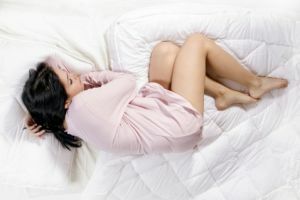
Syndrome occurs regardless of age, but the middle and elderly are at risk.
The restless legs syndrome when falling asleep is characterized by rhythmic jerking and convulsions, with the dilution or bending of the toes on the feet, the periodic movements of the entire foot. The disease is localized in the lower limbs, but as it progresses, it can go to the upper extremities.
Syndrome may occur in the absence of any disease, have a genetic origin. In other cases, it is associated with iron deficiency, pregnancy, uremia, heart failure, tumors, diseases of the peripheral nervous system.
Sleep paralysis
This phenomenon occurs during the transition between waking and falling asleep. To the paralysis of the whole body is often added hallucinations, a sense of horror, fear, shortness of breath. Especially sensitive people imagination draws those present in the room  house, demons or intruders.
house, demons or intruders.
Sleep paralysis occurs during the fast sleep phase and is biologically explained as an obstacle to abrupt movements( so that people do not wake up from them).At this point, the brain works and the body does not. Paralysis occurs only with a natural awakening and more often in a lying position on the back.
The cause may be a lost sleep and wakefulness. Especially if such disruptions occur rarely. Stressful situations and a passive lifestyle increase the likelihood of sudden stupor.
How to manifest and where to localize?
Sudden muscle contractions in the form of seizures can spread to:
- feet;
- hands;
- facial muscles;
- head;
- whole body.
Muscle contractions, felt as flinch, can:
- twist the limbs once;
- as though "to throw" a separate part or all body;
- feel like a dip under the bed.
Despite the diversity of manifestations, the causes and mechanism of the contractions are very similar.
Causes and features of adult nocturnal seizures
All individually and to determine for each of us why you jerk and tremble, when you fall asleep, you need to see a doctor. He will appoint the necessary tests and examinations. In summary, the following causes of involuntary contractions can be identified:
- neurotic, stressful conditions;
- overabundance or deficiency of trace elements( magnesium, calcium, potassium, sodium) and vitamins;
- epilepsy;
- osteochondrosis;
- disruption of the endocrine system;
- tetanus;
- dehydration of the body;
- flat feet;
- subcooling or overheating;
- smoking and alcohol abuse;
- is a professional activity related to the tension of one group of muscles;
- wearing high-heeled shoes.
In adults, seizures are most affected: biceps, semitendinosus, semimembranous and quadriceps.
It is necessary to see a doctor if:
- convulsions occur every day for more than a week;
- the duration of the attack is more than three minutes.
Baby cramps
Baby cramps are not uncommon. This is due to increased excitability of the central nervous system due to active brain development. In addition, the likelihood of getting into the body of various kinds of infections due to the yet unformed and thin walls of  vessels.
vessels.
Convulsive seizures in children occur for two types of causes. They can be epileptic and non-epileptic. The first type is associated with the presence of signs of epilepsy in the child. However, only a doctor can establish the diagnosis.
In this case, the central nervous system may be affected or the hereditary predisposition and specific personality characteristics may be affected. Also, characteristic changes in the electroencephalogram should be observed.
If such signs are not observed, the probability of diagnosing "epilepsy" can be ruled out.
Non-epileptic type of seizures can occur for the following reasons:
- As a consequence of birth trauma. In this case, the muscles of the face and limbs are contracted. Such cramps can occur from birth or manifest within a few months.
- As a result of defects of the central nervous system, cardiovascular, heart defects, congenital malformations, asphyxia.
- As a result of infectious diseases of the central nervous system due to the toxicity of the virus. In this case, the tension of the whole body is observed.
- Response to vaccination.
- Endocrine disorders.
- Cystic formations and brain tumors.
- Poisoning.
- Attacks of hysterics.
- Metabolic disorders. This cause in childhood is less common than in adults. But the lack of trace elements does increase the risk of seizures. In this case, the facial muscles often suffer.
In children, nocturnal cramps are characterized by the trembling and stretching of limbs in a dream.
To reduce the risk of muscle contraction, parents can make the child before going to bed easy massage of the feet and lower legs, organize a contrast shower for the legs.
Rare spasms during a child's sleep do not carry a potential threat, but if they occur systematically, it is a signal that they need to seek help. Parents should watch the child's sleep in order to tell in detail about the features of the attacks to the treating doctor.
What to do, how to get rid of the problem?
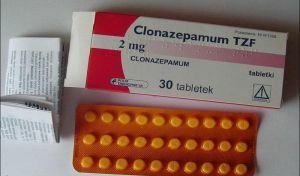 To get rid of nocturnal seizures, you need to know the cause of their origin. If the spasms are associated with health problems, the treatment should be directed, first of all, to the affected area. For example, if painful contractions are a consequence of epilepsy, then the use of drugs like neuroleptics, clonazepam, valproate acid will reduce the likelihood of seizures. And seizures in infants after infectious diseases can stop the vaccination.
To get rid of nocturnal seizures, you need to know the cause of their origin. If the spasms are associated with health problems, the treatment should be directed, first of all, to the affected area. For example, if painful contractions are a consequence of epilepsy, then the use of drugs like neuroleptics, clonazepam, valproate acid will reduce the likelihood of seizures. And seizures in infants after infectious diseases can stop the vaccination.
If the seizures are not related to the state of health, but are a consequence of external stimuli - they need to be eliminated.
If you feel a spasmy spasm, the following actions will help:
- pull the toe of the leg( if the cramp is brought down by the lower limbs) or the palm of your hand( if upper) to yourself, relax and pull back on yourself, and squeezing and unclenching the fist will help to get rid of the cramp in your hand;
- gently massage the joint muscle;
- in an emergency, pinch a sore spot or prick with a needle.
Unpleasant emu we. .. is not allowed
The appearance of seizures can be prevented by following simple rules. This does not apply to cases where muscle contractions occur against the background of the disease. If there are no health problems, and convulsions, spasms, shudders and tremors in the sleep periodically appear, try the following measures to prevent them:
- Do not overcool .In the cold season wear the limbs on your limbs and keep your feet warm. For this you can buy additional warm insoles.
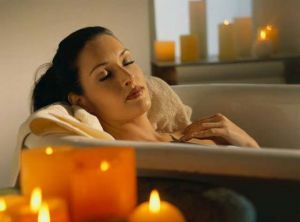
- Daily eat foods rich in calcium, potassium and magnesium ( dairy products, green vegetables).Ideally, if you switch to proper nutrition.
- Avoid excessive caffeine consumption and smoking .
- Before going to bed, take a bath , it will help the body to relax. You can add sea salt and essential oils. If there is no time to take a bath, make local baths for hands or feet.
- Motion is the life of the .So, go in for sports or exercise regularly at home.
To prevent seizures in young children, parents should monitor the optimal temperature in the room where the child sleeps. Before going to bed the kid should be calm, do not play with him in active or emotional games.
Before falling asleep, you can make a crumb foot massage and contrast shower for the legs. If you often get spasms and worry in a dream, immediately consult a specialist.



